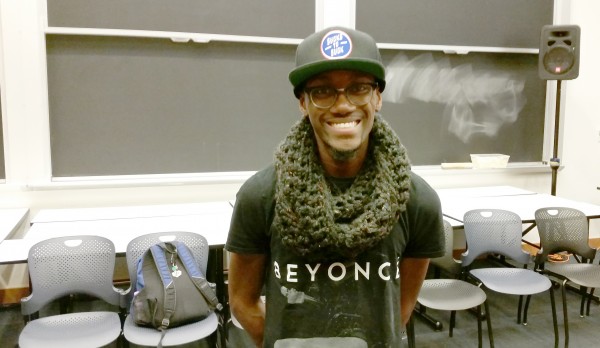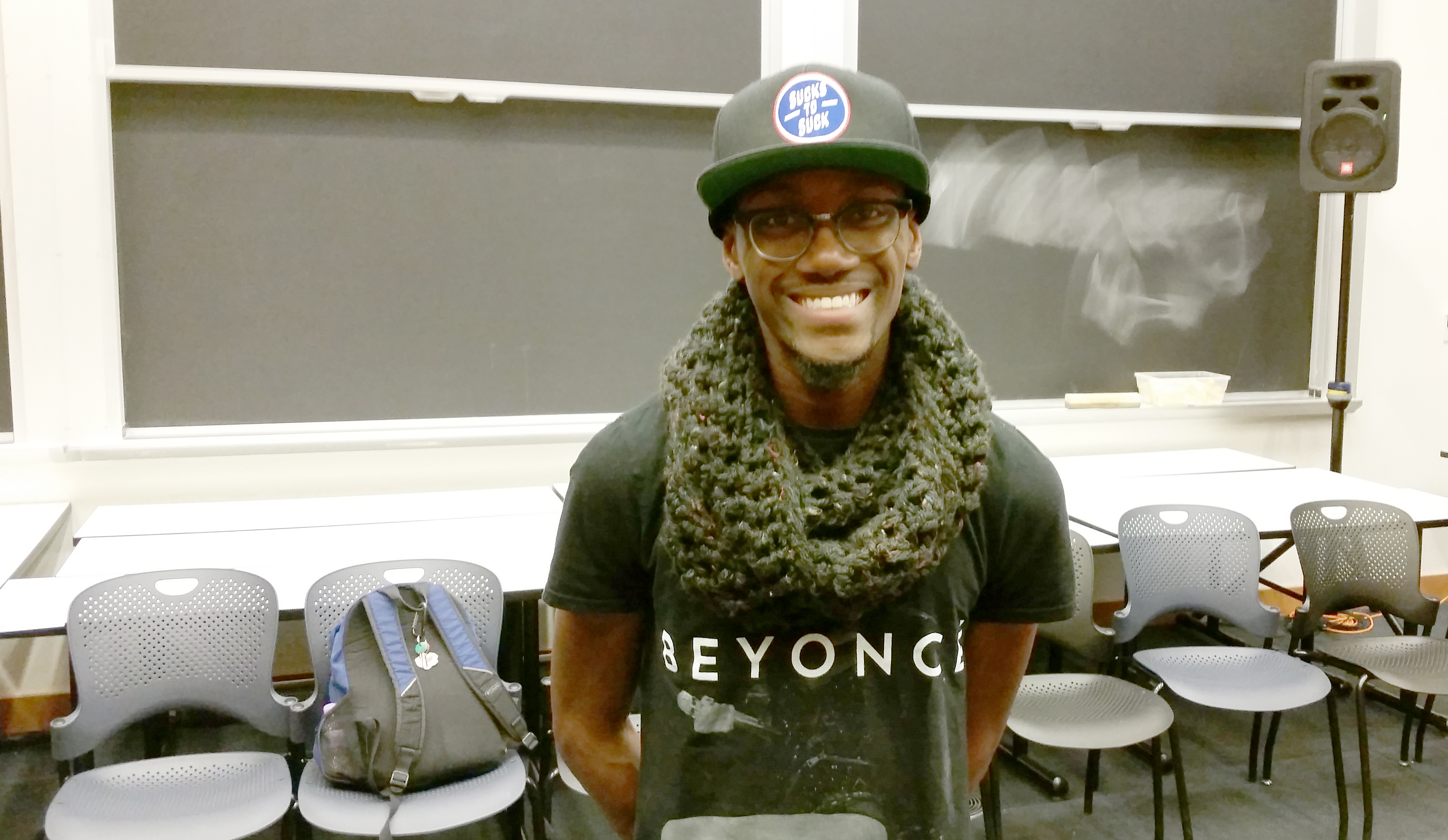
Aquib Yacoob, a student at Colby College in Maine, said he couldn’t believe he was in the United States, when he arrived in Ferguson, Missouri as part of an Amnesty International observation team earlier this year.
“It could have been the streets of Palestine or South Africa during Apartheid,” he said while speaking Saturday at an AIUSA conference in Boston.
“I was terrified, but I met only peaceful protesters,” he said. “I was terrified of the militarized police presence.”
Wearing a gas mask, Yacoob picked up a discharged container of tear gas that had been launched at protesters by police. The gas was labeled, “Not to be used against civilian crowds” and “not to be used after the expiration date.” The police had violated the instructions on both labels.
Yacoob’s takeaway is that the police, despite their military power and weaponry, are afraid. They are afraid of black and brown people banding together and demanding civil rights.
“Human rights violations are happening in our country, in our backyard,” he said.
Yacoob was one of several speakers at the Northeast Regional Conference in Boston as Amnesty international USA (AIUSA) released their report on human rights abuses in the aftermath of the police shooting of Mike Brown, an unarmed African-American man in Ferguson. I was fortunate to be in Boston to take part in an enlightening and informative “Ferguson Community Discussion” ahead of the AIUSA Northeast Regional Conference.
The conversation began on the MIT campus where more than 50 people were given a small dose of “de-escalation training,” a way of engaging in non-violent direct action, by Kalaya’an Mendoza. Mendoza was part of the AIUSA team that went to Ferguson to observe the police reaction to the protests that erupted over the shooting. He’s an expert in non-violent resistance and also an activist field medic.
Mendoza maintained that non-violence, the way he teaches it, is not a life stance, but a tactic that allows people to “unmask the brutality of the oppressor.” He divided the class in two and we took turns playing the parts of oppressor and activist. I will admit that I’m never that comfortable with role playing, but I did the best I could.
Along with the instruction in non-violence, Mendoza and the AIUSA observation team in Ferguson acted as human rights observers, braving tear gas and ultrasonic weaponry, as well as police wearing combat gear and piloting vehicles meant for destroying enemies, not keeping the peace.
“I’ve seen this in Beijing,” said Mendoza, “I never thought I’d see it in the United States.”
“Ferguson,” he continued, “is symptomatic of St. Louis and St. Louis is symptomatic of what’s happening in the rest of the United States.”
Larry Fellows III introduced himself next. A resident of St. Louis, Fellows is a good looking 29-year-old African American man taking his first break after 70 straight days of street activism. He is one of the founding members of the Millennial Activists United, formed in the wake of the shooting in Ferguson. On hot days, cold days, in the rain, late at night or all day, Fellows has been on the ground in Ferguson, working with the media, coordinating volunteers, and assisting with vigils and protests.
The night of the shooting, says Fellows, “you could kind of feel like, this weird air. No one knew what we were doing then…”
From the beginning the police seemed more interested in quashing unrest than in finding justice or preserving the peace. The police routinely threatened anyone who didn’t comply with their orders, even the press. It didn’t seem to matter that people were committing no crimes, but simply protesting peacefully. The police mandated that protesters continuously walk rather than stand in one place (something the courts found unconstitutional) and attempted to limit protesters to APPROVED ASSEMBLY AREAs.

Fellows, who worked as a loan officer in a bank eventually left his job to be a full time activist. “It got to the point that my rights became more important to me than my job,” says Fellows. Still, Fellows has to eat, so anyone with some extra money in their PayPal account can send him a few dollars at LFellowsiii@gmail.com.
The last speaker of the evening was Rachel O’Leary, who headed up the AIUSA observation team. She had nightmares for weeks after leaving Ferguson. In her nightmares, O’Leary is separated from her team and watches helplessly as the police prepare to fire on her friends and coworkers. The dream is based on actual events, though the worst never happened in reality.
The report her team compiled and made available through AIUSA calls for an investigation into the human rights violations observed in Ferguson during the protests. “The reason Ferguson resonates is because it’s happening all across the country,” says O’Leary.
Winning a human rights victory against racial profiling, police brutality and militarized policing weapons and tactics all not be quick and easy. “This work will progress in slow, incremental and unglamorous ways,” says O’Leary.
But it will progress, as long as we learn and apply the lessons of Ferguson, and hold our police officers and government officials to high, human rights standards.

